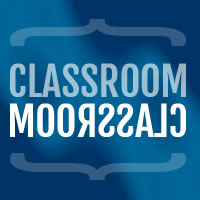Tie Training to Mentoring
 While the concept of the flipped classroom began to emerge in education circles in the 1990s, it has recently picked up steam as an approach to learning worthy of serious consideration in the corporate world. At its core, the concept of the flipped classroom is that the design of the instruction is reversed (or flipped) so that instructional content is provided outside of the classroom (e.g., through video, e-learning modules, reading) and the prescribed learning activities that were often looked at as “homework” are completed in the classroom itself (whether that classroom is physical or virtual).
While the concept of the flipped classroom began to emerge in education circles in the 1990s, it has recently picked up steam as an approach to learning worthy of serious consideration in the corporate world. At its core, the concept of the flipped classroom is that the design of the instruction is reversed (or flipped) so that instructional content is provided outside of the classroom (e.g., through video, e-learning modules, reading) and the prescribed learning activities that were often looked at as “homework” are completed in the classroom itself (whether that classroom is physical or virtual).
The argument supporting this practice goes something like this: The moment when learners are completing what was traditionally viewed as “homework” is the exact time when they need the most support and guidance (e.g., from the instructor/advisor). This is not the time for them to go-it-alone!
Stop and think about that for a moment. There is a lot to be said for providing learners with support at the point of implementing learning. There have been countless studies on the efficacy of traditional classroom learning that point to the fact that retention of learning suffers over time when there is no good opportunity to begin applying the learning quickly in the wake of said instruction. Use it or lose it, basically.
Within the last 12-18 months, we have been working with a handful of clients who want to adopt flipped classroom principles. While our clients’ programs don’t look exactly the same, the general flow is:
Pre-work (self-directed) → Learning Event (class) → Post-event support (continued learning)
Our clients put this process into action by setting up a learning cohort in River and assigning the pre-work to the learners. (River supports the integration of learning content and the ability to assign and track completion of To-Do items.) They will then conduct the class itself. For some clients, this is an actual physical classroom for in-person events, whereas others use virtual technologies for synchronous learning from numerous locations. After the event, our clients use River for post-class support that allows the instructor/advisor to maintain contact with the learners. This lasts for whatever period of time is appropriate to help ensure the learning takes hold. It is this last part of the process wherein, in my humble opinion, it all comes together. This is the point at which the learning becomes real.
 Let’s talk through an actual use case. An organization we work with recently promoted 14 individual contributors to managers, meaning these employees now have people management responsibility for the first time. In the old way of doing it, the organization would have likely brought together those 14 employees for several days of training on management concepts and approaches. The new managers would “drink from the fire hose” during the course, learning all types of new concepts. However, when they returned to their desk or field upon completion of the training, while they might change the vocabulary they used a bit (and been able to show off the new concepts they learned), many would often struggle with implementing these new desired work behaviors.
Let’s talk through an actual use case. An organization we work with recently promoted 14 individual contributors to managers, meaning these employees now have people management responsibility for the first time. In the old way of doing it, the organization would have likely brought together those 14 employees for several days of training on management concepts and approaches. The new managers would “drink from the fire hose” during the course, learning all types of new concepts. However, when they returned to their desk or field upon completion of the training, while they might change the vocabulary they used a bit (and been able to show off the new concepts they learned), many would often struggle with implementing these new desired work behaviors.
Now, let’s flip the approach. Imagine, if you will, that before physically coming together, the managers were assigned pre-work (e.g., watch a series of videos on core management principles, read the organization’s Manager Handbook). Then, in the class itself, the managers focus on role playing and other guided activities to begin practicing what they learned over the course of their self-directed pre-work. Finally, upon completion of the event, they stay together for 3-4 months, as one cohort, supported by an online technology that allows them to continue to collaborate and learn from both the instructor and one another.
Now imagine that six weeks into the process, one of the new managers is having some issues with one of their reports and they need to develop a Performance Improvement Plan (PIP). Wouldn’t it be great if they could draft a PIP and talk through how they are going to deliver it with the members of that cohort? Then, in the wake of having the conversation with their employee, they can return to debrief with their learning group, discussing “the good, the bad, and the ugly” of how it went. This would lead to them receiving feedback around what they can do to improve next time, as well as helping the others in the group learn from the real-world experience of their colleague.
This can happen! It’s already being done by some of our clients, and companies of all types and sizes are beginning to see the value in this type of process. It’s not a pipedream, but a genuine possibility.
 Learning is a process, not an event. To the extent that organizations can support that process with ongoing collaboration as a key component—subsequently providing the ability to brainstorm and receive contextualized feedback—the better for the learners in that process. So, if you are not already doing so, give some consideration for how you can “flip the classroom” for better return on your training investments.
Learning is a process, not an event. To the extent that organizations can support that process with ongoing collaboration as a key component—subsequently providing the ability to brainstorm and receive contextualized feedback—the better for the learners in that process. So, if you are not already doing so, give some consideration for how you can “flip the classroom” for better return on your training investments.
Contact us to learn more about how River supports the flipped classroom.








